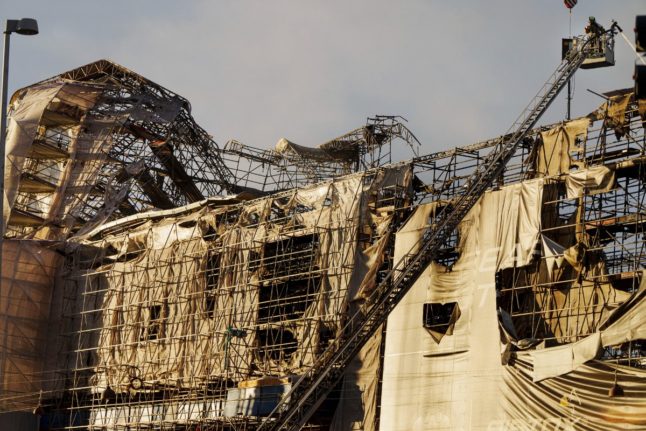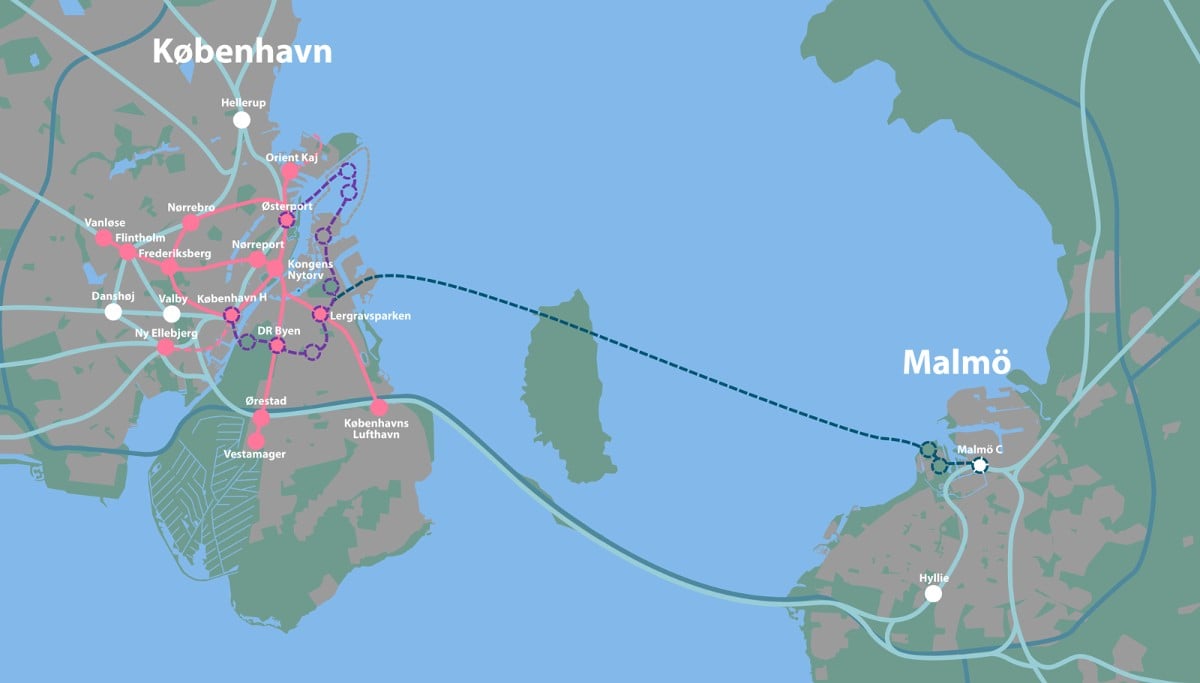Amid flames and black smoke, the 54-metre (180-foot) spire crashed into the street below the Borsen building on Tuesday morning, which had been undergoing renovation. Shortly after 4pm, rescue services said the fire had been brought under control.
“The fire is under control to the extent that we at this moment are dealing with what we call final extinguishing,” director of emergency services Jakob Vedsted Andersen told a press conference, adding the work would continue for “many hours”.
He said that half of the building was more or less burnt. Earlier in the day, witnesses watched in tears as more than 100 firefighters battled to save the building.
“This is our Notre-Dame! This is a national treasure,” local resident, 45-year-old Elisabeth Moltke, told AFP.
“It pains us all to see Borsen in the middle of Copenhagen in flames. It is our shared cultural heritage”, Prime Minister Mette Frederiksen told public broadcaster DR, lamenting the “hundreds of years of history going up in flames.”
Denmark’s King Frederik X said in a statement that the country had woken up to “a sad sight.”
“An important part of our architectural heritage was and still is in flames,” he said.
The fire started at around 7.30am under the red-brick building’s copper roof, emergency services told reporters.
As flames and huge plumes of black smoke billowed from the rooftop, fire trucks surrounded the building, covered in scaffolding and canvas, which today houses the Danish Chamber of Commerce.
‘Dreadful loss’
The landmark spire that fell was known for its distinctive design, being made up of the intertwined tails of four dragons — which were meant to protect the building from both enemies and ironically fire, according to the Danish Chamber of Commerce.
The Borsen building, close to the Christiansborg parliament and seat of government, was commissioned by King Christian IV and built between 1619 and 1640. It is one of Copenhagen’s oldest and best known landmarks.
Housing a vast art collection, it was being renovated to celebrate its 400th anniversary.
The images recalled the disaster at Notre-Dame Cathedral in Paris, which was gutted by a fire almost five years ago to the day. Its spire was also destroyed in the flames.
“I’m lost for words… It’s a 400-year-old building that has survived all the other fires that burned Copenhagen down to the ground,” said Carsten Lundberg, an employee at the Danish Chamber of Commerce. “It’s a dreadful loss”.
Culture Minister Jakob Engel-Schmidt said in a post on X, that he had been moved to see employees, rescue workers and residents trying to “rescue art treasures and iconic paintings from the burning building.”
Images from the scene showed several people carrying works of art.
Forces from the Danish military were also called to the scene, in particular to try to evacuate artworks.
‘No matter what’
Vedsted Andersen, said that extensive parts of the building were damaged beyond repair and that for hours the focus had been on trying to save the building’s facade.
“A large part of the stock exchange has been severely damaged by the fire. But a large part of the valuables have been saved,” he told reporters.
Speaking outside the burning building, Copenhagen mayor Sophie Hæstorp Andersen said the city and the Danish Chamber of Commerce had already decided to try and restore the building, however the details, including funding, would have to be decided later.
“This is part of the story of the building of our city, a story that we can’t just leave in a sea of flames, and therefore we will do everything we can to rebuild this,” she told reporters.
Brian Mikkelsen, director of the Danish Chamber of Commerce, later told a press conference that their board had decided that Borsen would be rebuilt “no matter what.”





 Please whitelist us to continue reading.
Please whitelist us to continue reading.
Member comments